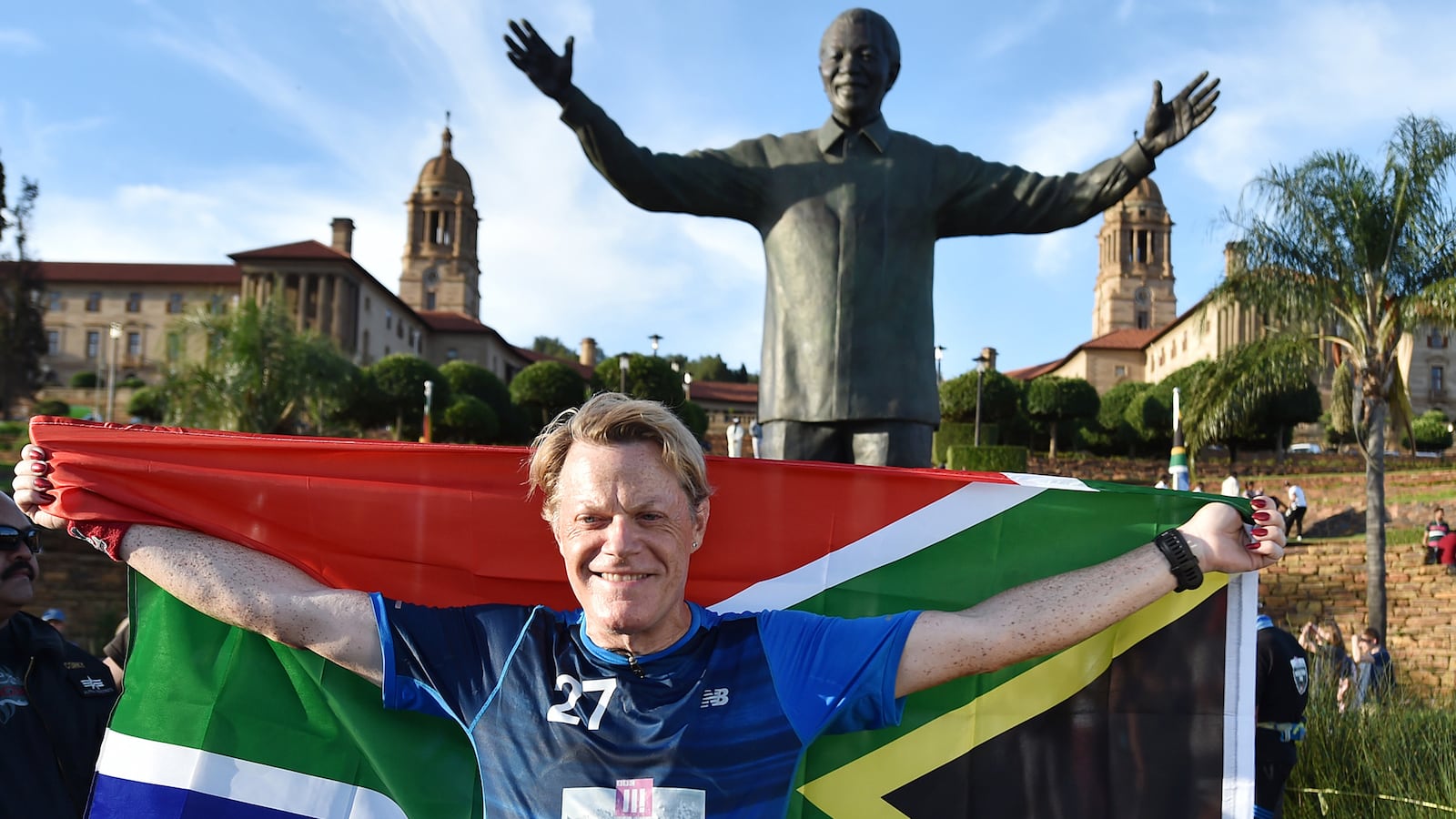Eddie Izzard is arguably the funniest person in the world. Watching Dress to Kill, his 1999 show, makes me weep with laughter almost from start to finish. I’d love the chance just to hang out with him.
But I do not want to run with him.
The 54-year-old comedian has just finished running 27 marathons over the span of 27 days. This jaw-dropping accomplishment was in service to the UK-based charity Sport Relief, and raised over 1 million pounds. In less than one month, he’s covered over 700 miles on foot.
I feel exhausted just writing that, and what little pride I had in running my paltry handful of half-marathons has been blasted to smithereens.
As impressive as Izzard’s string of marathons is, it doesn’t technically qualify as an ultramarathon, a new running craze for people who simply don’t feel that pushing themselves to go 26.2 miles is nearly far enough. Defined as any race longer than a standard marathon, it’s been growing in popularity over the past several years, with Runner’s World reporting that 70,000 people finished such races in 2013. (The number of people who came to their senses or disintegrated into a fine powder before reaching the finish line was unreported.)
This trend can be traced, at least in part, to Born to Run, a best-selling account of very-long-distance racers, and a tribe of indigenous people in Mexico with a tradition going back centuries of running for hundreds of miles.
The Runner’s World article offers tips to people hoping to “rock” their first ultra, which to my reading amount to forcing yourself to run a tremendous amount under circumstances as unpleasant as possible. Of course, given that I find the prospect of rocking an ultramarathon as appealing as trying to rock an anesthesia-free root canal, I’m probably not part of the target audience. But Izzard’s marathon of marathons must truly have called for an extraordinary amount of training.
For inspiration, it’s possible he turned to the writing of Dean Karnazes, a man renowned amongst hard-core runners for (among other achievements) running 50 marathons over 50 days in 50 states. If you want to know what it’s like to run more than 300 miles at one go, including several sleepless nights, Karnazes is your guy. He’s made an entire career out of willingly putting his body through experiences that lesser mortals like myself find vaguely nightmarish.
I was reminded of Karnazes’s writing by Dr. Brad Garstang, a family medicine physician in Missouri, and an accomplished endurance athlete in his own right. Garstang has run 35 marathons, and will participate in his fourth Ironman triathlon this summer. He completed back-to-back marathons once a few years ago, and has run one 46-mile ultramarathon.
However, he was clear that pushing one’s body to the limits of its endurance does come with the potential for ill health effects.
“Medical risks of this would include possible stress fractures, rhabdomyolysis [a breakdown of muscle fibers that leaks cell contents into the bloodstream] and kidney failure,” Garstang told me. The advice he offers prospective runners wanting to participate in endurance events is a common-sense approach of starting small and slow, building up distance over a period of years.
Garstang also mentioned studies by James O’Keefe, a Kansas City cardiologist, who has reported increased risk of cardiac rhythm problems or scarring with chronic extreme exercise. While the degree to which marathon running or other high-intensity, long-duration exertion might have negative health effects is controversial, moderating one’s participation in distance running may mitigate the risk. Garstang’s usual recommendation is to limit marathons to two per year, though he notes that his own running partner ran 13 of them last year to raise money for charity without apparent injury.
While I’d still describe myself as an avid runner, it’s clear that “avid” is a very relative term. I’ve run a half marathon or two every year for the past few years, and a full marathon is on my bucket list. But contemplating much beyond that flips my mental switch from “something to try” to “dear God, no.” What does it actually feel like to just keep running and running and running?
For Dr. Ken Starnes, a first-year family medicine resident and (in his words, lapsed) ultramarathon runner, the answer ranged from “great” to “why am I doing this?” to “I cannot take another step” and back again, all within the span of the same race. The farthest he’s ever gone was 70 miles, in pursuit of a 100-mile goal.
“A typical week in full training mode would have been 2-3 easy 5-7 mile runs, a middle distance run of 10-15 miles and a long very slow run of 4-5 hours,” Starnes told me about his preparations for ultramarathons. “The other part of preparation is obsessively planning what to carry with you, what to eat/drink, how long you anticipate between aid stations and drop bags.”
For Starnes, the period of recovery afterward was a much mental as physical. While he notes others get back to running more quickly than he did, it wasn’t for a month after his long run that he returned to it.
As Izzard takes a much-deserved rest in the coming weeks, he’ll need to consume plenty of protein to rebuild damaged tissue. Peter Jones, a sports medicine specialist in Staffordshire, England, also notes that his immune system will be moderately suppressed. (I came down with a brief viral illness the day after my last half marathon, but it could have been mere coincidence.) Jones advises light physical activity and stretching in the weeks ahead.
For my part, I wish Izzard rapid relief from what must literally be a staggering amount of soreness. Running 27 marathons in as many days and raising millions for charity is a remarkable achievement. But as admirable as his feat may be, I don’t think I’ll be trying to duplicate it any time soon.






